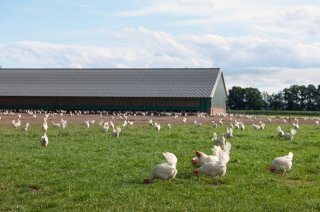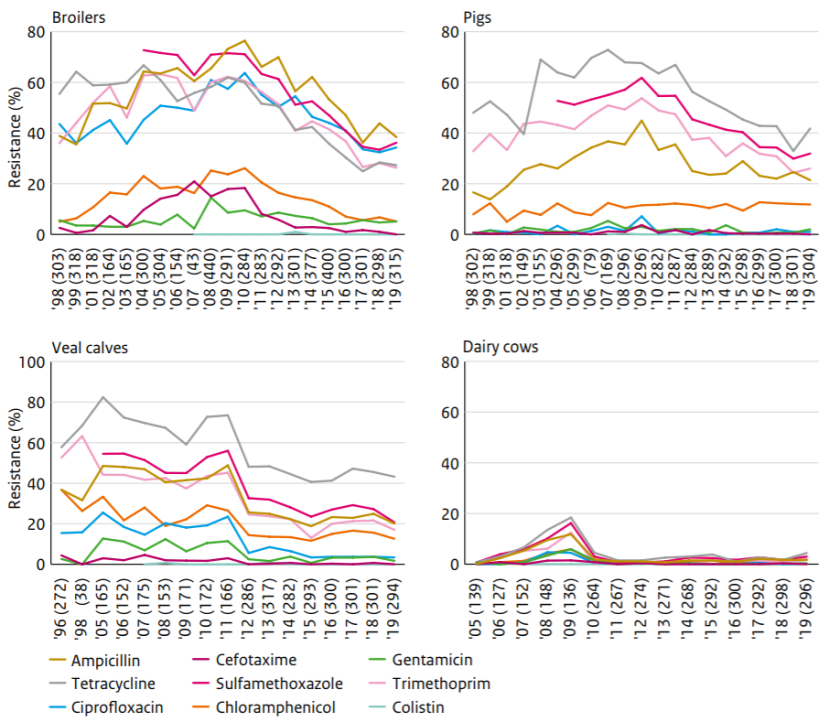
Impact story
Less resistance to antibiotics in livestock farming
Resistance to antibiotics forms a threat to public health. If bacteria become irresponsive to antibiotics, doctors become unable to treat certain illnesses. Some of these resistant bacteria originate in the livestock sector, where farmers and veterinarians systematically used antibiotics as a preventive measure in the past.
Excessive use of antibiotics causes bacteria to build up resistance. These resistant bacteria then jump to humans, for example, through the meat they consume. In 2008, the Dutch government decided that the livestock sector was to reduce the use of antibiotics. In the past decade, the use of antibiotics was slashed by no less than 70 per cent through the combined efforts of Wageningen University & Research, Utrecht University, farmers and veterinarians.
Monitoring
Whether resistance is reduced when fewer antibiotics are used is monitored through farm animals’ faeces. Researchers of Wageningen Bioveterinary Research screen the excrement for specific bacteria with known resistance mechanisms. In order to create a clear overview of the trend, WUR conducts the same test on the same bacteria strains every year.
There was a clearly visible trend from the start, says Kees Veldman, head of Laboratory on Antimicrobial Resistance in animals. No sooner did the livestock sector begin reducing the use of antibiotics, or the level of resistance to antibiotics began to fall. In 2014, thirty-six per cent of chicken meat contained bacteria resistant to all types of penicillin. This percentage has now dropped to 18 per cent, says Veldman. The laboratory also focuses on the E. Coli bacteria. A decade ago, eight out of ten E. coli bacteria in chickens were irresponsive to ampicillin. This number had been reduced by half in 2019. The use of antibiotics in livestock farming has been reduced to almost zero. The declining trend of antibiotic resistance in animals has now stabilised for most antibiotics
Healthy farm animals
There has been a critical change in our thinking in favour of a healthy livestock sector with as few antibiotics as possible. This can be achieved by taking into account the individual needs of every different animal species. As they do in humans, factors such as stress, nutrition, exercise and social interaction are key, says Ingrid van Dixhoorn, animal welfare researcher at Wageningen Livestock Research. Thus, Wageningen University & Research and its partners closely monitor the sector to protect public health and keep antibiotics available as medication or ultimate option for humans and animals.
